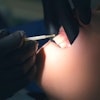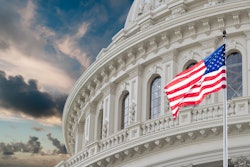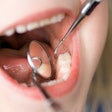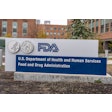
For decades, fluoride has been lauded as a key ingredient in preventing tooth decay, leading to widespread water fluoridation across the U.S. However, emerging scientific evidence raises critical questions about the safety and efficacy of this practice, particularly concerning its potential impact on brain development in children.
The recent federal court ruling challenged the status quo by recognizing the potential risks associated with fluoride exposure. The judge underscored a fundamental principle in toxicology: "It's the dose that makes the poison." This ruling was influenced by findings from the National Toxicology Program indicating that fluoride levels above 1.5 mg/L could be linked to decreased IQ in children. Despite ongoing debates about safe levels of fluoride, the judge concluded that many pregnant women's exposure exceeds hazardous thresholds, leading to alarming implications for public health.
Historically, fluoride's incorporation into public water systems was championed by dental professionals and public health authorities, largely based on studies that highlighted its effectiveness in reducing cavities. However, as with many medical guidelines, the recommendation was rooted in a lack of robust evidence and, at times, the dismissal of dissenting voices.
In medicine, when experts like Dr. Gideon Lack have voiced concerns that we might need to introduce allergens to babies earlier rather than later to prevent allergies, they have faced ridicule from the established medical community. The reluctance to acknowledge these warnings illustrates a troubling trend in both dentistry and medicine: a resistance to reevaluate longheld beliefs, even in the face of compelling evidence.
The consequences of adhering to outdated recommendations can be profound. The recent court ruling revealed that many dentists remain unaware of the mounting evidence against fluoride, raising concerns about the profession's commitment to patient safety. The implications are serious: The brain, a vital organ that shapes our identity and capabilities, may be at risk due to exposure to a substance that many consider harmless. This disconnect between established practice and emerging research could lead to irreversible damage, particularly for children in communities with high levels of fluoride.
Moreover, the fluoride debate underscores a broader theme within the dental community: the tension between consensus and evidence. Dental professionals often find themselves entrenched in established dogmas, sometimes prioritizing institutional reputations over patient welfare. The reluctance to embrace new evidence can lead to a dangerous status quo, where practitioners remain unaware of or unwilling to confront the potential harms of their recommendations.
The ruling should serve as a wake-up call for the dental profession. It not only acknowledges the potential hazards associated with fluoride but also emphasizes the need for transparency and accountability within the dental profession. As the saying goes, "To err is human" and admitting past mistakes should not be met with hostility but rather seen as an opportunity for growth and improvement. The ADA and other professional bodies must be willing to confront the possibility that their longstanding recommendations may have inadvertently harmed public health.
Looking ahead, it's essential to educate both practitioners and the public about alternative strategies for maintaining dental health without relying on fluoride. Here are a few actionable steps to consider:
- Invest in water filtration. Use filtered or reverse osmosis systems to reduce fluoride exposure in drinking water.
- Educate patients before and during pregnancy. Patients need to understand which products contain high levels of fluoride and seek alternatives to protect developing brains.
- Use hydroxyapatite toothpaste. Consider switching to a toothpaste that uses hydroxyapatite, a natural mineral that can help remineralize teeth without fluoride.
- Monitor well water. For those relying on well water, regular testing can ensure safe fluoride levels.
- Question municipal water sources. Municipal water supplies may not always accurately reflect fluoride content; vigilance is crucial.
- Demand fluoride-free water fountains at schools. Or provide children with water bottles that minimize fluoride exposure.
It is time for the dental community to embrace evidence-based practice and prioritize the well-being of our patients' whole-body health, not just concern for the tooth. The ruling on fluoride exposure is not merely a legal decision; it's a chance to rethink our values and responsibilities as healthcare providers.
"Primum non nocere."
Dr. Mark Burhenne is the co-founder of Fygg, a toothpaste that offers a fluoride alternative with hydroxyapatite. With over 30 years of experience in dentistry, Burhenne is passionate about functional dental care and whole-body health. Subscribe to his newsletter at askthedentist.com or follow him on Instagram at @askthedentist.
The comments and observations expressed herein do not necessarily reflect the opinions of DrBicuspid.com, nor should they be construed as an endorsement or admonishment of any particular idea, vendor, or organization.



















